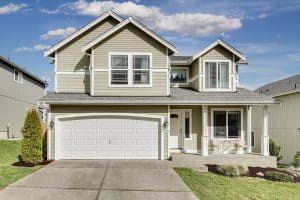Traffic congestion is a serious problem in cities around the world. It results in long journey times, increased fuel consumption and air pollution. It can also lead to irritability and a loss of quality of life.
Roadway expansion is one way to reduce traffic congestion. This supply-side approach involves adding lanes or building new roads. However, this solution can be expensive and may not be feasible for all cities.
Expand Public Transit
There are many ways to expand public transit. This includes creating more bus routes and promoting walkable development around bus stations. It also involves encouraging public transportation use by making it clean, safe, and convenient.
Increasing public transit use is an effective way to reduce traffic congestion. It also reduces energy-related emissions and vehicle maintenance costs. Additionally, it helps lower the cost of living for low-income households.
Moreover, it can help create more sustainable cities. It can also provide affordable housing near public transit service areas, which can enable families to access jobs, schools, and health care services. Furthermore, it can encourage social interaction among commuters and reduce loneliness. Lastly, it can reduce the need for car ownership, which can alleviate traffic congestion. In addition, it can promote the use of green technologies, such as solar buses.
Build a Light Rail Network
A good way to reduce traffic congestion is to build a light rail network. This will give people a safe, reliable alternative to driving their own cars. A full train of six rail cars can hold about 1,080 passengers, so one carload is equivalent to a line of vehicles that stretches 95 city blocks for traffic moving at 25 mph.
However, light rail networks should be strategically planned and focused on areas with a high volume of commuters. Often, far-flung light rail lines through industrial zones don’t have enough passenger demand to justify the cost of construction. Instead, cities should focus on improving public transit options and encouraging ride-sharing. These strategies will help to alleviate traffic congestion and make cities more livable for everyone. They’ll also help to reduce carbon emissions and improve air quality. Moreover, they’ll save drivers time and money.
Build a Park-and-Ride System
Parking congestion is a major problem in cities. Park-and-ride systems allow people to park their cars at one location and ride public transportation to their destination. This helps reduce traffic congestion and provides more parking spaces in city centers.
These systems also offer free or cheap parking, which encourages people to switch to public transportation. They act as a “nicotine gum” for daily commutes, slowly weaning people off their single-occupancy vehicles.
Congestion has many costs, including lost productivity for truckers (both long-haul and local pickup and delivery), home and business service providers, such as plumbers, electricians, and computer technicians; wasted fuel; and unnecessary pollution. The solution to these problems is not limited to large cities. Regional governments can build partnerships with surrounding cities and towns to improve traffic flow and establish long-term funding solutions for infrastructure.
Create a Dedicated Bus Lane
A dedicated bus lane is a travel way that is reserved exclusively for buses. It can be separated from the general traffic lanes using soft barriers (such as rumble strips) or hard barriers (concrete curbs). In addition, bus signal prioritization can be implemented to reduce transit delays at intersections.
Dedicated bus lanes can increase the speed of buses and allow them to move through traffic congestion more quickly. They can also help to improve the reliability of bus service and raise ridership.
By implementing dedicated bus lanes, cities can help to reduce air pollution and greenhouse gas emissions. They can also encourage more people to use public transportation, which is a much better option than driving a private vehicle. By improving public transportation, we can cut down on traffic congestion and make our streets safer for everyone.
Install Automated Traffic Lights
Many of the traffic lights that you see on city roads are operated through timers. This type of system is effective at intersections that have a high volume of traffic consistently throughout the day. However, it can cause problems for intersections that have variable traffic levels.
The problem with inductive loop systems is that they can sometimes fail to detect vehicles, especially lighter ones such as motorcycles. Newer sensor-based systems use cameras to detect vehicles and log the data.
Transportation authorities can then analyze the data and adjust the signals accordingly. These smart traffic lights can also help to reduce traffic congestion by giving priority access to emergency vehicles. This is important, as every minute that it takes for an ambulance or fire truck to get through a traffic light increases the chances of an accident occurring.
Create a Traffic Management System
Traffic management systems use various sensors and cameras to collect real-time data about the flow of traffic. They are designed to reduce congestion and improve road safety. They can also be used to notify drivers of road closures and other pertinent information.
Technology such as traffic light management solutions from LYT can help to improve traffic flow by optimizing signal timing and reducing delays. These systems can also help to improve travel options by facilitating efficient routing for buses and emergency vehicles.
Another way to improve traffic management is through system modification strategies, such as converting road junctions into parking spaces or adding bus lanes. This helps to improve traffic flow by removing the need for cars to idle at red lights, which saves fuel and cuts down on air pollution. It can also encourage people to ride or walk, which is a more environmentally friendly alternative.
Increase Parking Capacity
As well as wasting time and fuel, traffic congestion has many other serious consequences that impact the quality of life in cities. These include increased air pollution caused by vehicles that are idling at low speeds, decreased efficiency and productivity of businesses, and increased stress levels among commuters.
One of the most effective ways to solve traffic congestion is to increase parking capacity. This can be done by providing more parking spaces near bus or train stations, allowing employees to park at work and take public transport home, introducing more parking charges on main roads, or using smart parking systems like those from LYT to prioritize drivers with the highest occupancy. These solutions will also reduce traffic by reducing the number of cars on the road. However, it is important to note that eliminating congestion completely would be difficult and costly, as traffic represents activity.
Reduce the Number of Vehicles on the Road
One of the most obvious solutions to traffic congestion is to reduce the number of vehicles on the road. Over the past two decades, while population increased 24 percent, vehicle miles traveled grew 80 percent. This dramatic increase in vehicle use has caused traffic congestion in many cities.
However, reducing vehicle use is a complicated endeavor. Creating more public transportation, i.e with Vail Valley’s shuttle operators, options is an important step, but a more sustainable solution would be to encourage carpooling and ride-sharing.
Traffic congestion is a problem in virtually all large, urban regions. It is an inevitable byproduct of people pursuing goals that inevitably overload roads and transit systems at peak hours. Fortunately, with the help of new traffic data, planners can find more precise causes for congestion and develop innovative solutions that will work in their specific regions. The results are better travel times and more reliable trips for all.
Reduce the Speed of Vehicles

Traffic congestion costs drivers in lost time, wasted fuel and increased commuting expenses. It also contributes to air pollution, greenhouse gases and ill-health through inactivity, obesity and social isolation.
Roadway designs, signage and speed reduction treatments can help reduce speeds by making it more difficult to travel at high speeds. For example, reducing the target speed for pedestrian crossings to 10 km/h can improve safety for younger and older people and reduce conflicts with larger vehicles.
Other ways to reduce speeding include implementing complete streets policies, designing roads with calming features and introducing self-enforcing gateway treatments. Additionally, ANPR systems can be used to monitor vehicle speed and identify problem areas. Traffic congestion is a complex issue and requires a holistic approach to planning. Taking the right actions at the right times will ensure that your transportation system is working for you rather than against you.
Increase the Capacity of Buses
While implementing new transportation strategies to reduce traffic congestion can reap both short- and long-term benefits, it is important to think about the entire region’s needs. This includes expanding public transit systems, including park-and-ride facilities and creating light rail networks. Additionally, implementing smart corridors with consistent greens and lane queue hops can help to decrease congestion.
It is also important to consider other ways to address traffic congestion, such as congestion pricing. This involves using tollways to charge drivers for accessing the roadways during peak times. Additionally, introducing high-occupancy vehicle lanes can encourage more people to ride together in vehicles. This will reduce congestion and improve road safety. Finally, reducing congestion can also save money for motorists by lowering fuel consumption and maintenance costs. Furthermore, it can decrease air pollution and noise levels. It also helps to keep cities more sustainable and healthy.




